
My intentions, which I referred to at the end of our last post, to write ‘little and more often’ have not translated into action. More than three months have passed since then. Circumstances conspired to make posting impossible for a month, (a great excuse for my usual prevarication), but the reality is that when we are engaged in ‘stationary travel’, (stopping rather than going), the ‘daily freshness’ which accompanies moving travel & the need I feel to document that more frequently (lest I forget) is absent.

This is not to say that staying in one place is any less interesting or exciting, but it is different. Observations which are initially new quickly become the ‘norm’. However, as I’m sure most committed readers of this blog understand, the benefits we experience from remaining in an interesting location for longer periods are those of being ‘in’ and ‘a part of’ that place to see how it evolves & changes over time.
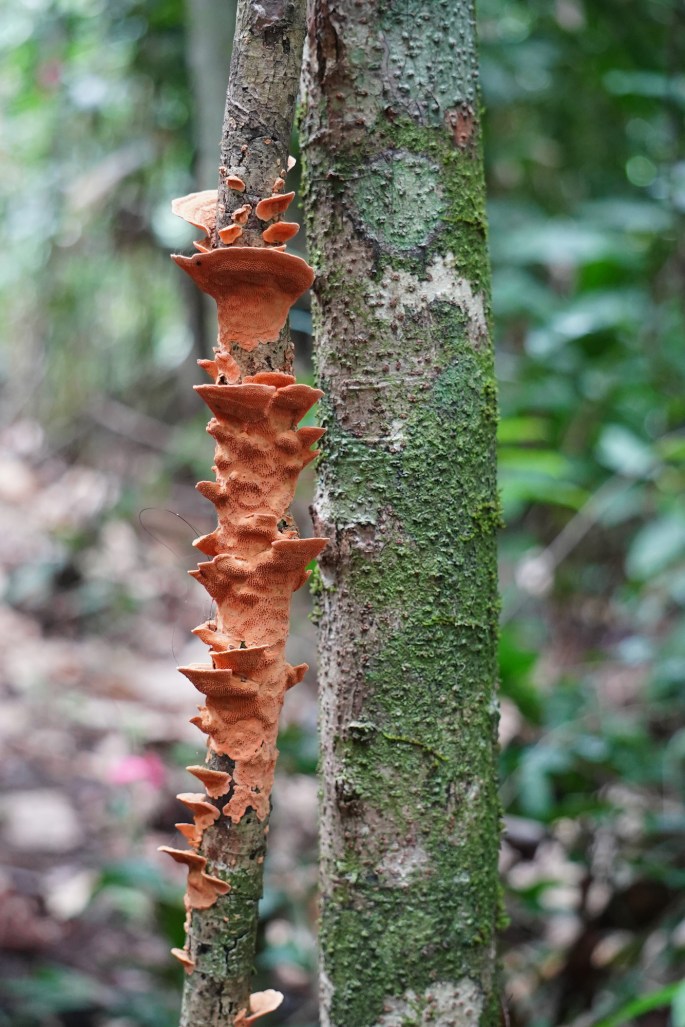
For new readers. We are currently caretakers at the Iron Range Research Station, surrounded by Cape York’s Iron Range tropical lowland rainforest where we will remain until the end of the next wet season. There was no certainty about this, we had agreed to a 3 month trial – for the owners & ourselves to be happy for us to see out the 12 months. We are & they are so we’re staying. The longest ‘stop’ to date in our travels will see us remaining in this ‘jungle’ location until the end of the next wet season – around May ’23. It is not only ‘enclosed jungle’ as the location on the north east coast of Cape York places us in close proximity to beaches too. This rainforest, whilst a ‘lowland rainforest’ is hilly and very steep country & because of it’s proximity to Papua New Guinea has unique flora and fauna, different to anywhere else in Australia.

The physical nature of the 800 acres of the privately owned rainforest we are living in, and the National park surrounding it, as well as steep is both dense & inaccessible save for where the few limited tracks have been cut. To leave the tracks requires commitment plus levels of fitness, agility & stamina that our age mainly precludes, particularly as the impact of a cyclone back in 2019 will continue to contribute an extra & significant layer of access difficulty for at least another decade. Fallen timber everywhere on the forest floor will take at least that long to rot away & everywhere that trees have fallen, gaps in the canopy have been created, bringing light & rapid growth of new vines & creepers as part of the forest’s ‘self repair’ strategy, like the healing of a wound. So walking off track is tough and strenuous, and it also carries significant risk of becoming lost! Literally as little as 20 metres without leaving a trail of flagging tape tied to branches can result in complete disorientation. The Iron Range is named thus because of a high level of iron bearing rock, making compass use untrustworthy & the denseness of the forest makes relying on a GPS tracker similarly unreliable. All this means that the Iron Range rainforest has remained poorly understood & continues to hold many secrets. This is why the Research Station we are caretaking exists.
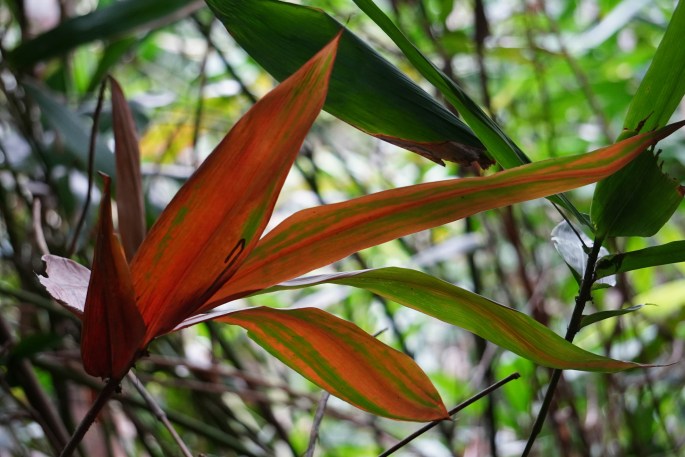
The owners have a passion for rainforests & see the opportunity to add to the knowledge base, underlining the importance of such places to the overall health of our planet. The Research Station offers accomodation to visiting researchers & encourages the bringing together of a wide variety of scientific disciplines which, as well as making new discoveries, creates new understandings & ways of observing. We feel privileged to be a small part of this, to have the place to ourselves, but from time to time to be part of the ‘buzz’ of enthusiasm that the knowledgeable & accomplished bring here with them . Some are scientists at the pinnacle of their field, many published authors of books, field guides, scientific papers, some enthusiastic amateurs – all sorts of folk, all interesting, all passionate, but to date at least all very human, down to earth & very good company!

We have had different specialists in Ants, Butterflies, & Spiders conducting research, a film maker interested in Palm Cockatoos, a social historian interested in the connections & meanings of the palm cockatoos to indigenous peoples & the impact of a declining palm cockatoo population, and the botanist responsible for the the most extensive guide to Iron Range flora. All of these people, including those who could rightfully claim to be the leading Australian experts in their field and on the world stage have without exception been folk who have had far broader interests in all things the natural world offers, as well as being modest & easy going folk. Bringing folk like this together results in many interesting meal time discussions where MrsTea and I, as non academics, have felt very comfortable to share & contribute. It’s what we hoped for. We will leave here far more informed, even if only with small snippets of retained knowledge in comparison to the experts. And new discoveries have been made during our time here already.

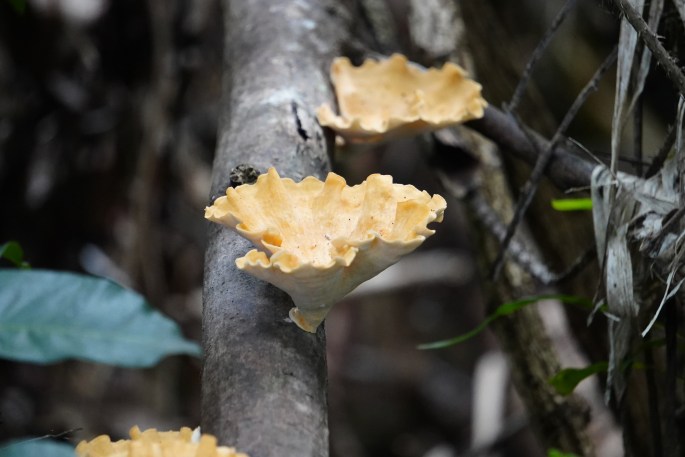
In addition to the visiting ‘researchers’, or rather as part of them the owners have also visited with some of the Lidar Scanning team they employ. They are developing a tool using Lidar technology to improve upon current rather less accurate & more cumbersome methods of evaluating & quantifying biomass. Something which they believe will become increasingly in demand across the planet as the need for companies to relate to carbon credits and for environmentalists to demonstrate environmental values continues to increase. Much of this is way over our heads but the basic idea, as we understand it, is that in what are still the early days of the development of this tool, that rainforest being one of the most difficult environments to assess in this way, also makes it an excellent ‘test tube’ & proving ground. After several years in development we think it is a technology which has now begun to get the attention of both business & governments.
These first few paragraphs above, I hope, provide context for the rest of this post which will now revert to sharing our day to day experiences of living in this remote area.

It is often said in discussions about what constitutes ‘remote’, that “nowhere is truly remote until something goes wrong & then things become very remote very quickly”. We are only minutes from Lockhart River airport & 5 minutes drive from Lockhart River community with it’s small supermarket, a post office, a primary school, a Health clinic & a newly opened social club and described like this it would be easy to imagine it being far less remote than many other places we have been to. Karlamilyi National park in Western Australia for example – 1200kms from the nearest medical facility (twice the range of an emergency helicopter) and 4 hours rough 4wd’ing from the nearest place a fixed wing aircraft could land. Yet in many ways here in the Iron Range has felt a lot more remote on occasions!

Lockhart River Community is well off the beaten track, a two hour drive over mountains, rivers and through forests on an often rough dirt road from the main road supplying the Cape (itself considered remote by many) makes it remote by Cape York standards. No supplies come here via truck, everything comes in on the barge apart from mail which comes in by air. Even though freight trucks can get here during the dry season they don’t because the barge company stipulates that they alone service the community all year round or not at all. During the wet season Lockhart is cut off for months by road by multiple rivers. Growing up in Lockhart River for many is an isolated experience which has both advantages & hardships.
In many respects – as far as getting services like the rest of the country one could say that Lockhart is often ‘out of sight & out of mind’. A prime example of this is the communications system. Every other community on the Cape has a 4G service. Here it is only a feeble and flaky 3G service, unreliable, meaning that what everyone else around Australia takes for granted is missing here. Even in the middle of town 4 bars of 3G on the phone rarely allows for even a single web page to load. The service doesn’t extend far out of town & where we are living we are lucky to get 1 or 2 bars of signal. When the service is working that is! This relies on a connection across the mountain ranges to a transmission tower a little south of Moreton at Batavia Downs. Unfortunately there is a remote relay station between Batavia and Lockhart. Solar powered with a backup diesel generator. When cloudy conditions prevail, common here, it often means the relay station batteries get run down & the generator automatically kicks into life to charge them to keep the connection alive. Trouble is the fuel runs out, batteries go flat & Lockhart River is effectively switched off from the rest of the world & from each other. When this happens Telstra eventually take fuel in to the tower by helicopter, but commonly that is 3 days or more after Lockhart has been cut off. This is not an uncommon event & Lockhart have been lobbying Telstra for over 10 years for an upgrade to have the same 4G services & reliability as across the rest of the Cape, & have become used to treating broken promises & pledges from Telstra & governments with the distrust they deserve.
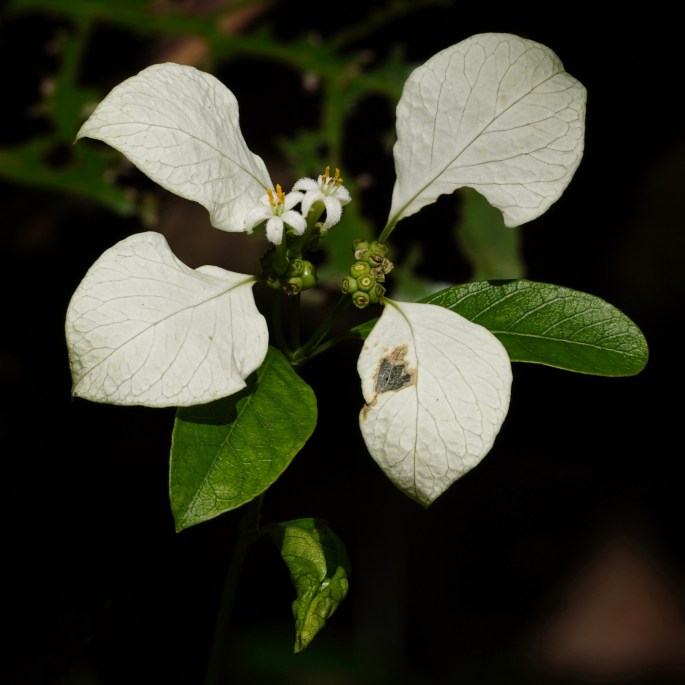
So how does this contribute to our sense of remoteness? Well we are lucky, we have a Satellite NBN service to rely on, So long as it is working everything feels pretty normal. As soon as it’s not there we are R.E.M.O.T.E. Gone is our connection to the outside world. If we are lucky we can sometimes pick up a faint 3G signal, a few hundred metres from the house, up a steep hill out in the rainforest. Without ‘comms’ we are in the dark. This was our lot for over a month when we lost satellite capability.
Imagine standing out in the forest, in the rain, waiting in a phone queue to report the problem over a phone connection which could, and often did drop out, eventually to be told ‘We’ll call you back’ and trying to explain that unless we camped out in the rainforest permanently waiting for return calls that what they were suggesting was simply not possible. “We’ll send you an email then” …. Noooooo! Folk sitting in a call centre with all the comforts of modern Australia can be forgiven for not understanding our situation even when explained to them, and there were times we felt quite desperate. Our situation was outside of their world – literally.
Sometimes we could get email ‘headers’, on the 3G but generally no content. Missing bank cards, Jury duty & a failed washing machine, banking, fallen trees needing clearing up at home in Victoria, paying bills & getting our internet repaired were among stressors we wrangled for the month it took to get the service back. For us it was a great deal of inconvenience, but for folk who live here it’s their life. That said, we have never lost sight of the fact that it is our choice to be here & now that we have our satellite service back online we are ‘back to normal’. It’s fair to say though that had it not been possible to reconnect us to the world I doubt we would have wanted to stay here for the duration.

It is different to being in a remote place when ‘on the move’. For that sort of travel we plan ahead, we ensure we have what we need, & any arrangements that need making before we go off grid are made. Very different when being off grid is sudden & unexpected.
The cause of the loss of internet was twofold. Primarily it was rodent damage. There are large rodents, the size of a small cat, & weighing up to around a 1kg who live in the rainforest White-tailed rats. Not only are they large & can be heard at night on the metal roof but they also have incredibly sharp teeth, reputed to be more than capable of opening canned foods. If you are ever up in the tropics & see coconuts laying on the ground, chances are that you will see many with 2” to 3” diameter holes in them & the contents inside absent. White-tailed Rats. Unfortunately they also seem to have a liking for electrical cables. The pic below is the damage one had inflicted to the coaxial satellite cable which carried our internet from the dish on the roof. The cable has now been replaced by the NBN repairman who spends the dry season driving up & down the Cape, & enclosed in ‘underground’ conduit’ – it being thicker walled than standard conduit & hopefully a greater deterrent.
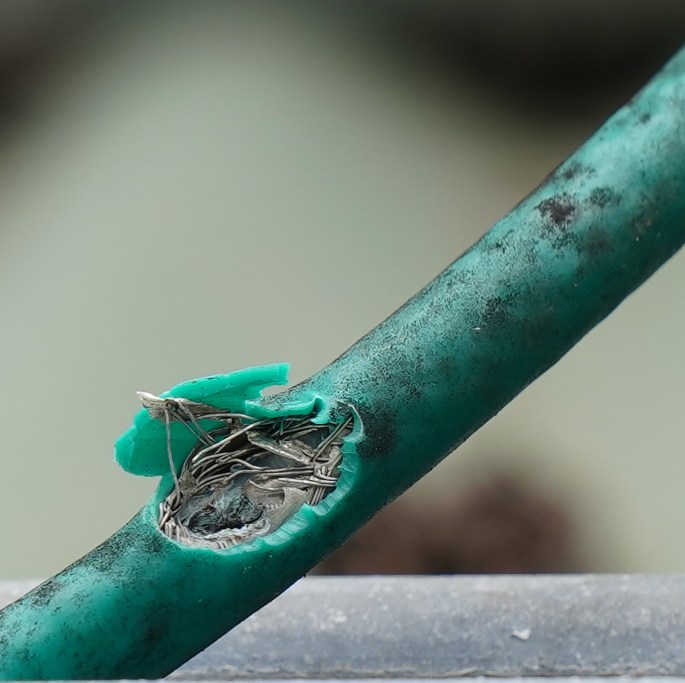
Once that was fixed it quickly became apparent that the 7 year old wifi router had succumbed to the vagaries of the tropical climate, heat and especially humidity. The property owners were very good, recognising the essential nature of internet here, they had a replacement router sent up to us within a week or so.
We did learn that we can actually manage without a lot of what we use the internet & phone for regularly – social media, contact with friends & family, news from Australia & the rest of the world (no tv or radio), & the things that we missed most were the ‘essentials’ we take for granted and generally pay little attention to – the mundane stuff which keeps the wheels turning. If anything could be picked up over the ‘net on 3G it was a rare bonus. Attempts to try to log on had to be prioritised & planned. Letting family know we were ok. Checking for news on a mate in the USA getting urgent treatment for cancer & not knowing if he was still with us or not. He is thankfully. (Ric when you are up to reading this, keep up the fight mate- hard though it is). A single social media post of a couple of lines (no pics) when possible, maybe once or twice a week) would take 30 to 40 minutes trying before successful. More than a few times we sat for lengthy periods, sometimes under an umbrella, on chairs carried up the hill, to make a minimal post or a quick phone call before it’s sound quality deteriorated to the point of unitelligibility. Thankfully we did receive an offer to use someone’s satellite internet in town, but gave assurances that this would only be for the most urgent reasons, & we didn’t want to abuse this so restricted our use to bare essentials – ensuring we had funds to make needed purchases in town and providing the necessary reasons for why I couldn’t attend to do jury duty in 4000kms away in Victoria..
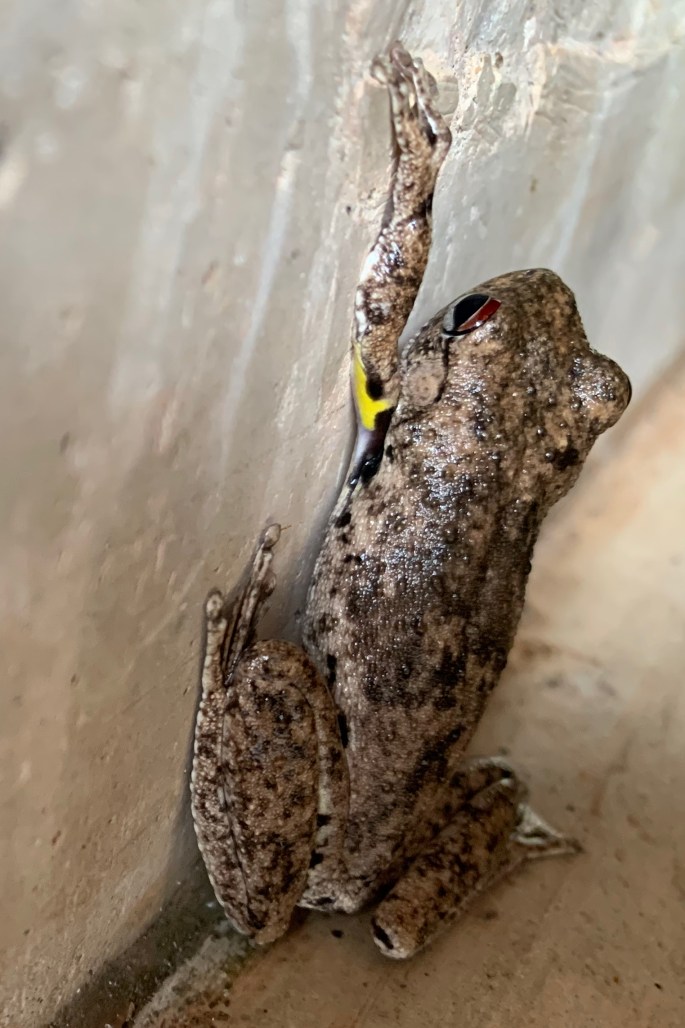
This being ‘in the dark’ (had the war in Ukraine finished and if so how?) although only for a third of our time here to date has undoubtedly coloured our experience, but it is not the whole story. I expect that you, the reader, wouldn’t find it too hard to understand that anyone feeling as we were would have a great deal less energy & motivation to attend to the exploring & discovering we came here to do when mundane necessities became so frustrating & time consuming.
I needed to get that stuff out of the way before I could bring myself to share some the of many positives since we’ve been here. A number of readers have commented previously about how our blog always seems to put a positive spin on all our experiences, both good & bad. There is a reason for that. Generally I’m writing about them after the fact & the process of writing is often helpful in processing stuff (cathartic even!) & ‘putting it to bed’. I wouldn’t want anyone to think our travelling lifestyle is always an idealised ‘living the dream’. It certainly has it’s ups & downs. We have our vulnerabilities just like anyone else. That said it is very difficult to think of any other way we would like to live. And as always things are only tough until a way through is determined & we always get through. If only we could both remember that when we are struggling!

The router was not alone in suffering humidity induced failure. My camera, a Sony A6500, a bit less than 5 years old with 4 wet seasons under it’s belt succumbed too, at only around 1/4 of it’s expected life. (A shutter count of 55,000 out of an expected minimum of 200,000). It’s intermittently odd behaviour, brief warning messages seconds after switching on of overheating, and immediately switching off again were most likely a result of corrosion on the camera’s motherboard. Cost to send away for examination & repair did not sound viable. Time for a new camera. I would have been happy to get another the same, but discovered that a world shortage of computer chips, (the same reason new cars are in short supply), applied to Sony cameras too. I needed a camera to suit the various lenses I have, so it needed to be Sony, & Sony had decided that although they make their own chips, to focus production on the more expensive full frame mirrorless range rather than the APS-c crop sensor range like the A6500. Finding an A6500 in stock anywhere in Australia proved impossible, & so the wallet was beaten into submission & a Sony A7iii was purchased. Being here without a camera was something I couldn’t contemplate.
So there has been a significant period of time during our first three months where few photos were taken. Absence of a reliable working camera, fear of using the new camera whilst humidity levels remained high, plus the necessity of having to learn how to use a new camera all contributed to a largely photograph free period. (Phone photos increased a bit). I have now begun to use the A7 but still have lots to learn. It is both more complex and more versatile than the A6500, but I’m slowly feeling more at home with it.

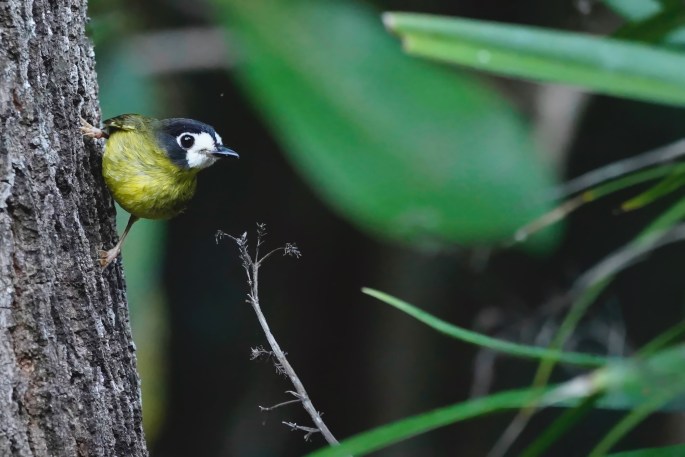
The A7, purchased from Cairns was brought up for us by the owners, flying in in their own plane. It was our first face to face meeting. Mum, dad & three year old son stayed for several days. It made a difference for us all to know who we all were. It was a pleasant and important step, aiding the establishment of two way trust.

Living in the rainforest is wonderful. We knew it would be. So much life around us. We can’t always see or hear what’s there but just knowing it’s there is special. Knowing there is heaps that is yet to be discovered, right here, right at our feet is both a matter of wonder & privilege . Every time it rains the fresh composty smell rises from the forest floor, the forest itself looks and feels cleansed. On a morning after rain looking into the forest is almost as though it has again come into focus, as though through a window freshly cleaned. We have had rain fairly often, but only light & smallish quantities, but it is enough. Up here in the forest covered slopes it’s largely a dry rainforest. A contradiction in terms, but the leaf and vine covered floor lays over soils impregnated with shale from which water drains quickly. Down in the valleys where small creeks run, some ephemeral & others permanent it is moister, with soils which hold water & different plant life. Dotted among the valleys are areas of savannah. Walking through rainforest & out into savannah, with it’s tall grasses and sparser trees is quite dramatic. Generally it’s not obvious (to us) why the stark differences (ecotones) between the two ecological communities exist where they do.
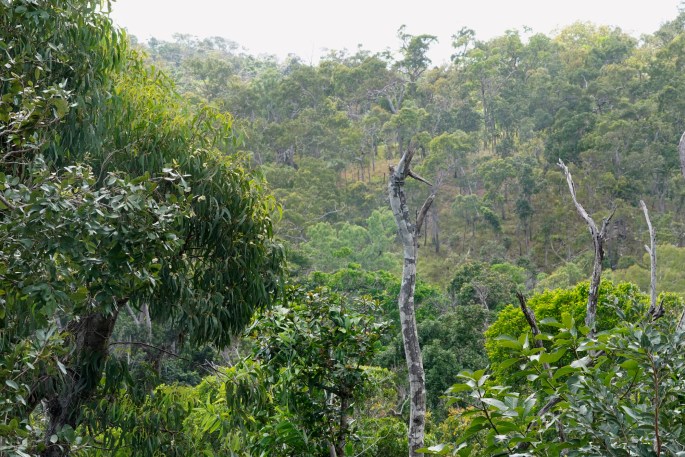
Sight is limited by the height & the density of the forest. Back at the house by walls & roofs too. At no time has this felt like a hardship, but when emerging into the more open savannah, or indeed walking the deserted beaches we always have an enhanced & a felt sense of appreciation for big open skies & accompanying this comes a sense of joy. A bit corny perhaps, but that’s what it is, joy. Take something away & appreciate it again each time you have it. The opposite of taking it for granted.

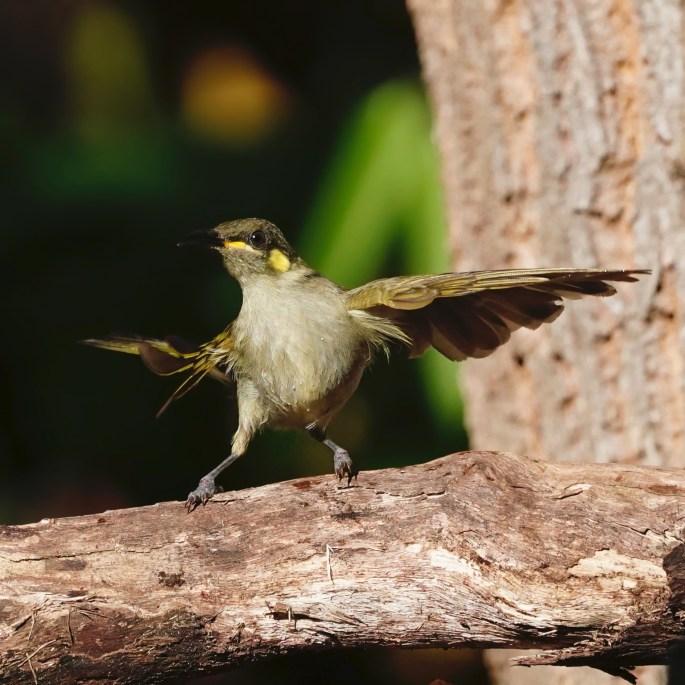
But it’s human nature to ‘fit’ things into our lives by taking them for granted. Right now as I have just typed that sentence I’ve stopped briefly to listen. Around me the calls of the frustratingly invisible Yellow-billed Kingfishers & Magnificent Riflebirds. The as yet unseen Black-eared Catbird & the Noisy Pitta (“Walk to work, walk to work”). I know if I play the Pitta’s call on my phone it will answer me, but so far they too have remained invisible – not hard in the rainforest. The ever present Brush-turkeys must be approaching mating season. The two most frequently around the house Named ‘Ike & Tina Turkey by MrsTea are running around more. Ike’s lilac neck sac is getting bigger each day & courtship consists of sudden bursts of speed as he runs at Tina full pelt, as though somehow this will convince her to let him have his wicked way. She’s not yet convinced, but the time will come. I’m about to stop writing to have a break for dinner. The light is beginning to fade & it’s time for the regular evening birdbath visitors to show up. First will be the Graceful Honeyeaters, then when they are done the White-throated Honeyeaters will come. If they come too soon, the Graceful’s send them off with a flea in their ear. Later the clown-like white-faced Robins come for a bath. Often just one, but sometimes up to three. Like clockwork every day. Taken for granted – I no longer rush to get the camera. It wasn’t long ago that I didn’t even know that White-faced Robins existed! Some day I’ll miss their comical appearance.



Dinner done so back to writing. More action as we ate. This time parrots. Somewhere close by the territory calls of a Palm Cocky, noisy flyovers by both Sulphur Crested Cockies & a lone male Eclectus, whilst a passing visit was made to the branches of one of the dead trees in view of the dining table by a pair of Double-eyed fig parrots. Binoculars are on the table by default. Still out in the fading light various small & different coloured skinks & lizards occasionally stopped whilst crossing the smooth warm concrete floor to alluringly wave their tails. Geckos – both the darker natives & light coloured Asians began to make themselves heard. A full pelt run by Ike at Tina saw her launch herself into the air, flying right over the top of one of the two houses & into trees beyond. I noticed because I had been writing about taking things for granted!
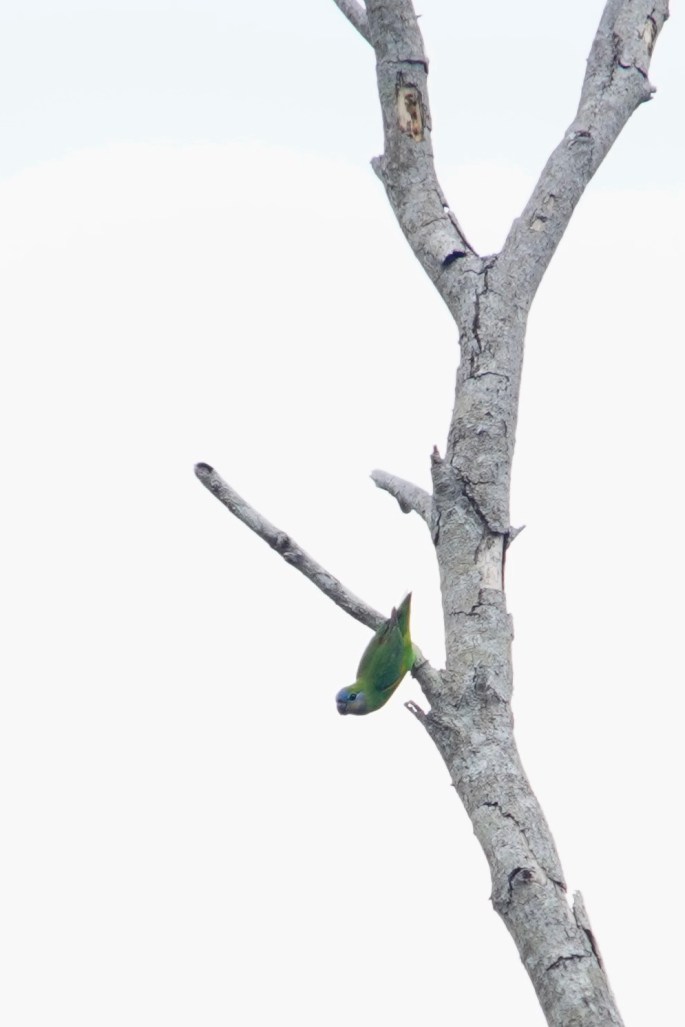
We eat earlier rather than later to avoid the mozzies. They are by no means the worst we have encountered, but worth avoiding nonetheless. The Forest sandflies which plagued us during the first few weeks here seem to have been pleasingly absent in recent weeks. Irritating little blighters, not the sort that brought us up in itchy bumps & welts, but constantly seeing them at close quarters (like ‘floaters’ in your eyes) & feeling them on your skin was enough. Forest sandflies for goodness sake! There’s no sand here! Another rainforest surprise. .


When visitors are here we often accompany them after dark, spotlighting for Green Tree Pythons (GTP’s) & whatever else is around. Our ‘record’ is three GTP’s in one evening stroll, but they have become less commonly seen as the weather has become a bit drier. We expect to see many more when the next wet season kicks off. Their bright green is impressive, but we still hope to see a bright yellow youngster. Often what we see when walking with visitors depends upon their interest/speciality. Watching their excitement discovering what they hope for, including as yet un-described new species is as interesting as the discoveries themselves. My favourite has been the exquisite little Graceful Tree frog ( also known as the Dainty Green tree frog) with it’s green body & bright orange feet. Hardly a new discovery to science but I’d never seen one before. We may start to go spotlighting alone again when things start to ramp up again toward the wet.


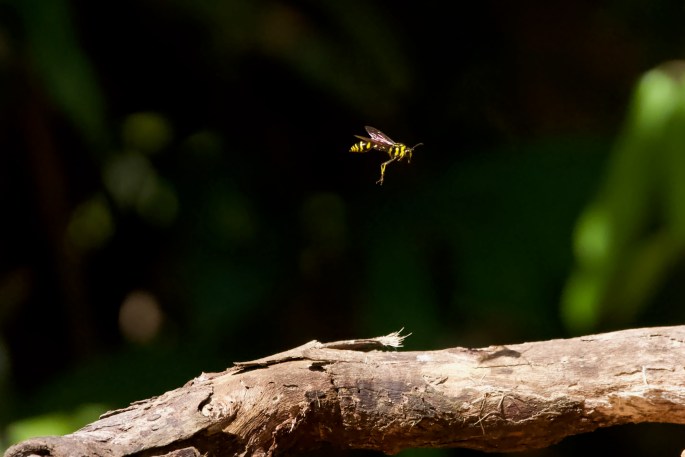
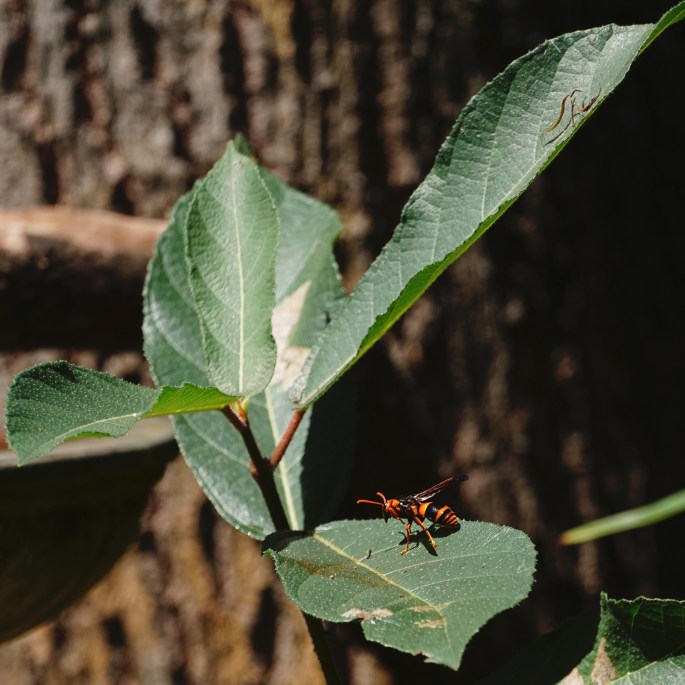
As mentioned earlier the sound of Magnificent Riflebirds is common, seeing them is harder, but one of our visitors found a favourite perch where the bird returns to regularly. We have the route to it marked with flagging tape after I got lost trying to show someone else where it was – not far off the driveway in. He’s there most days, but as yet we haven’t seen him in full display mode. Getting to the spot by around 4pm is best, but it means having to stand around on damp ground for an hour or more, being harrassed by mozzies & resisting the temptation to sit on a comfy looking moss covered log (Chiggers territory). He’ll fly around from perch to perch, easy to make out his characteristic loud ’Swoosh swoosh’ wingbeats, reminiscent of light sabres wielded in Star Wars movie battles, as he flies through the undergrowth from perch to perch to call from each. Patience will sometimes see him come to the branch where the camera can reach before the light starts to fade & mozzies win the battle. Last time I went down there I had long pants & sleeves, deciding it better to be warm that mozzie bait. It helped with the vicious Wait-a-while vines too, a rainforest speciality like a cross between velcro & razor wire! Worth it to finally get a photo though.
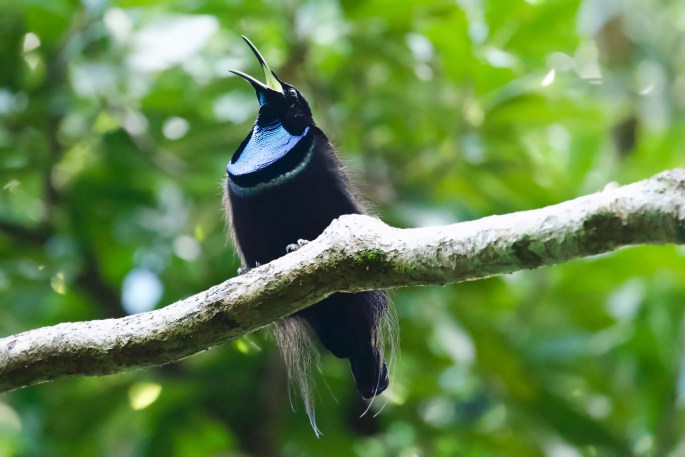
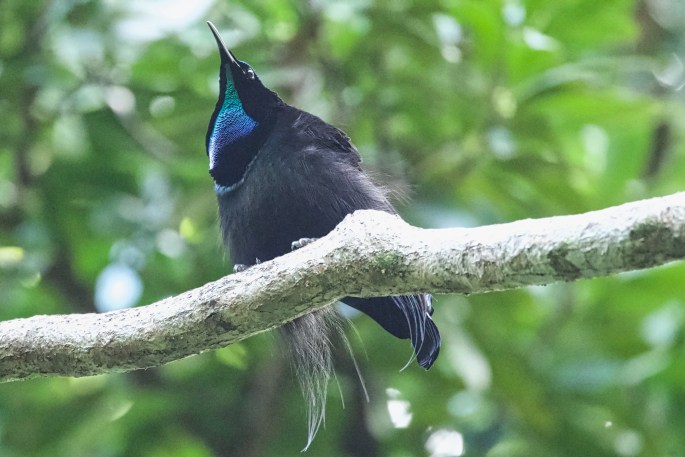
Mostly the Wait-a -while is easy to avoid, by sticking to established tracks, but when a huge old tree fell & needed cutting to clear the track there was a lot of it about which the tree had pulled out onto the track. It was whilst the ant researchers were here, them tired & worn out from a day’s ant collecting, they were stuck with quad bikes on one side of the tree & the house on the other. We all pitched in, but the frequent need to disentangle each other slowed the heavy job.
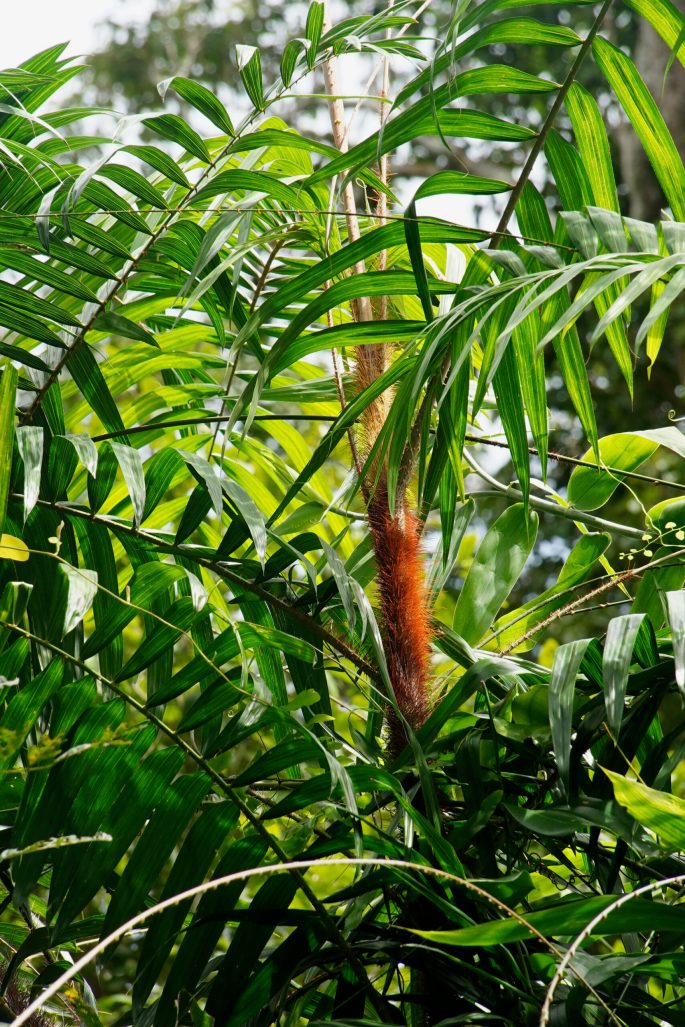
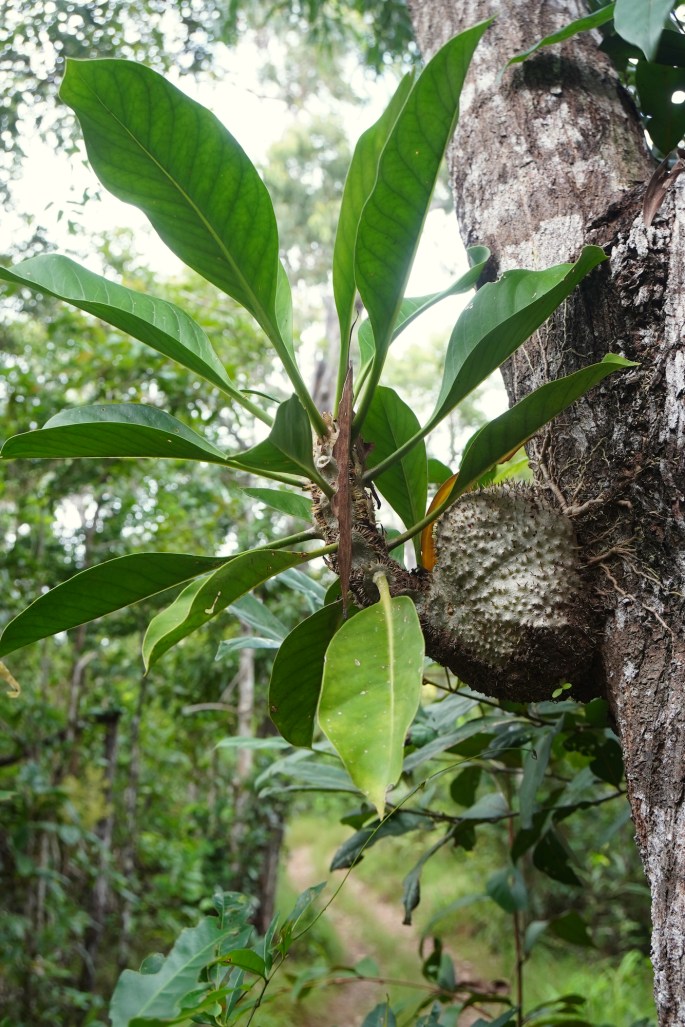
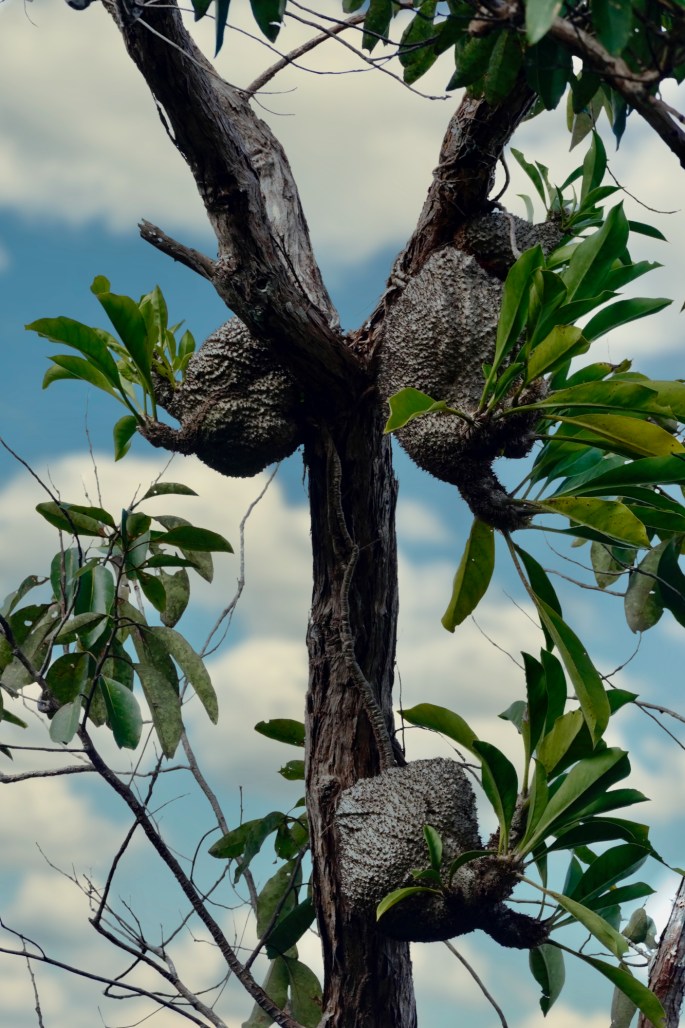
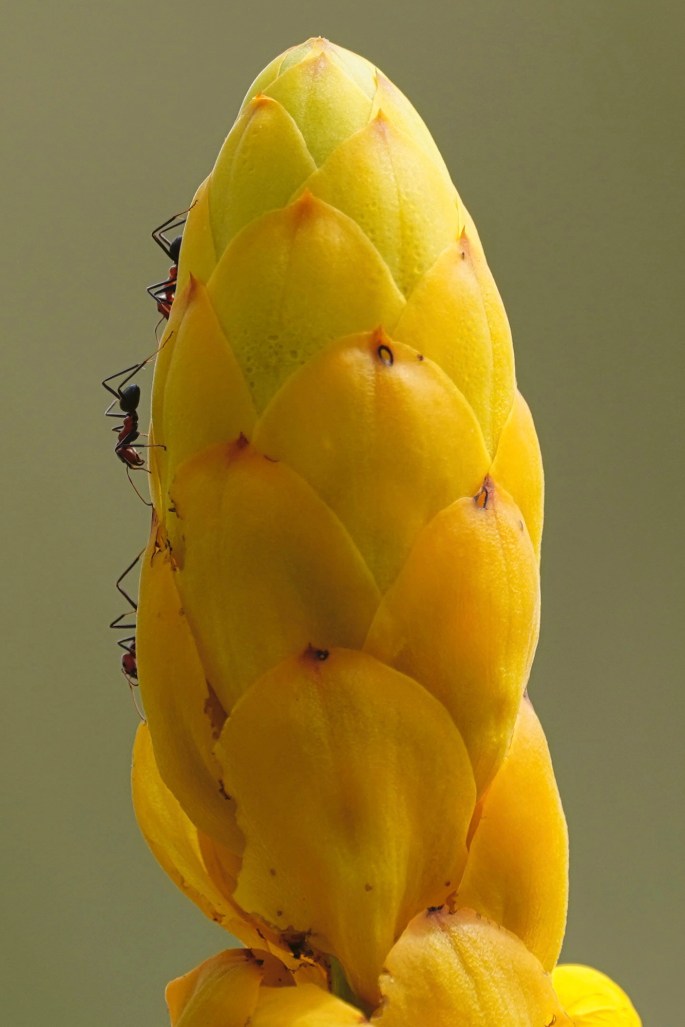
Who would have thought that ant collecting would be such hard work! They had been collecting on two sites that day. Marked out the sites with measuring tapes & then putting out various traps – underground, on the surface & in trees, as well as collecting a fair amount of leaf litter shaken through a net sieve , bagged & labelled. A couple of days later returning to collect the contents of the traps, clear up & return. That in itself is a reasonable amount of work. The two sites however were in thick jungle. First the site needed to be reached & to give you an idea of the difficulty involved with this – the two sites were about 100 metres apart. Getting from one site to the second took around two hours each time! A constant battle through the forest’s denseness with need for disentangling nearly every footstep! Two sites visited in a day was a big day, & they covered 12 sites during their stay, plus all the processing & recording back at the house. These were motivated & passionate people. The professor, his wife, his Phd student & the masters degree student supervised by the Phd student. They left with enough work to keep them busy in laboratories for 4 or 5 months & had found at least 30 as yet un-described species! The most amazing thing was that we too found ants interesting. What to a glance look like ‘ little black things’, are in fact a multitude of different colours, shapes & sizes. One new species when looked at closely under a stereoscope was purple in colour, others had appendages like grappling irons. The variety is immense. Most specimens are preserved in Glycol for later examination, including sending material off to Canada for DNA testing. Legs are the favoured material for this & somehow it tickled our fancy to learn that these need to be sent overseas in batches of 95. The thought of tiny packages of 95 ant legs passing through customs seemed funny. Like all of ‘our ‘ visiting researchers ant people were passionate about their area of study, and rather than being very straight, boring & serious, seem to enjoy self deprecating humour, able to laugh at themselves & along with others. MrsTea & I have never been part of academia, but these folk were very accessible & tolerant of our questions. Good company as all our visitors have subsequently turned out to be. It can be a little intimidating to be the odd ones out, with language that is default & shared among enthusiasts, but not once have we felt such intimidation, a reflection of the quality of folk who have been here. In fact many have appeared to enjoy the ‘freshness’ of our intrigue from ‘outside’ their field of expertise, but never in a patronising manner.



We saw quite a variety of spiders too. Spiders which mimic ants, spiders which mimic beetles & those who mimic twigs & parts of plants. Web casting spiders with webs woven between their front legs waiting for a meal to fall into it …. and many many more. Again new discoveries made. One species with only one previous record -from 30 years ago – a female – was found here during a recent visit. Excitement on the night when the first was found. More so on the second when four more were found , including a never before seen male! Another a species which our visitor, the author of probably the most authoritative guide to Australian spiders, was one he had been searching for for 50 years. It’s Genus is known to exist in Papua New Guinea but the Australian Species is as yet ‘un-described’ .
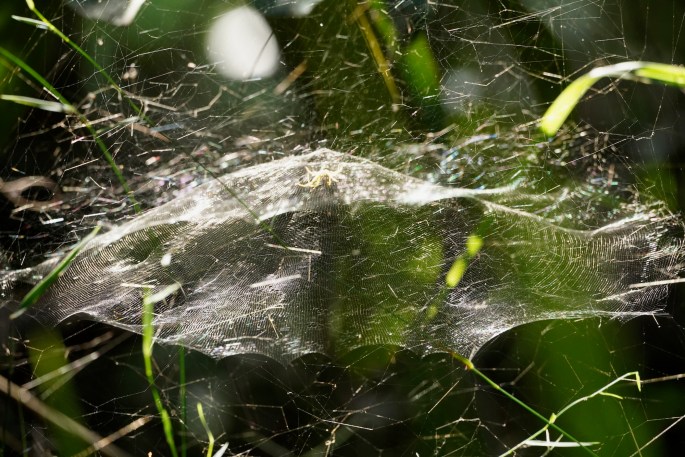


The most easily spotted spiders are the giant Golden Orb Weavers, except even these are not always easily spotted if not looking where you are walking. One, whom I eventually named Lucy, built her web across a narrow shortcut path through the trees. The commonly build across open spaces. Their silk is renowned for it’s strength. Watching them build is fascinating, an eight legged harp player with the speed & accuracy of an experienced tradesman. I ‘found’ Lucy twice, both times I wasn’t looking where I was going & the first I knew was my face covered in her web & seeing this huge spider out of the corner of my eye just inches away. She was trying to get away from me but it was unsettling nevertheless. After the second time I became more aware & each time she rebuilt I would carefully pull her web down using a stick. It was training of a sort. After the third time I did this she re-located to build alongside the path rather than across it. I stopped to pass the time of day with her regularly after that. One day after collecting several suitors as well as several other ‘parasitic’ spiders on her web, she just disappeared, as they often seem to do. No goodbyes, just gone. Lesson – spider romances are not for keeps. 🙂


Another visit by the owner & his Lidar scanning team – a mix of rest days after the team had been working at Bramwell Station north of here & an opportunity to collect more data. Like Ant collecting, this data collecting is hard going, made more so because much of it has to be done at night as this is when the wind has generally dropped. Essential for the scanning process. Thick dark grabbing forest, torchlight only, difficult navigation, whilst carrying a variety of heavy but sensitive equipment in backpacks for hours at a time.
It was whilst they were here that the stinging tree incident occurred. Pedro, the 6’ tall young team leader described feeling his arm brush against what felt like sandpaper. Moments later the pain began. Back at the house his arm became swollen & oozing clear fluid. Pain came in waves affecting his lymphatic system, not just the ‘injured’ area. He was a stoic chap, not given to theatrics, not wanting to give into the substantial pain he was in, but as it worsened we could see it in his face. The Iron Range Stinging tree, which is an opportunistic plant, popping up where light gaps are created, along side paths or where cyclones have brought trees down, generally lasting until the canopy above heals itself, is considered to be the most painful of several species of stinging tree across Australia. It is a little understood plant, with two attempts to research it over the 30 years abandoned due it making the researchers sick. A further more recent attempt to understand it has described it as a ‘venomous plant’ which effectively injects, as yet not understood neurotoxins into it’s victims. A treatment protocol from Cairns base hospital was found online. Click on link below
http://c-foam.com.au/wp-content/uploads/2018/04/ARCS-Tox-Stinging-Tree-Management.pdf
From this it was obvious that we were dealing with a poorly understood situation, based upon anecdotal aboriginal records of crushing ants to obtain formic acid to put onto the wound.
The tree, on touching the skin leaves tiny silica ‘hypodermic like needles’, in the skin which when disturbed release more toxins. Pedro had hairy arms & the first thing he did was to shave the affected area – releasing more toxins. His colleagues, using what they had to hand, then applied duct tape to pull out the micro ’needles’, but probably did more harm than good pressing the duct tape onto his skin.
Finally he recognised that he could not ’tough it out’ and accepted my offer to take him into the clinic. We felt confident that the clinic would be familiar with the situation & it was one of the three days per week that the RFDS staff were there. “Is that the tree which leaves prickles in you” asked the visiting RFDS male nurse. This did not inspire confidence. After the nurse had looked in the book (not the management protocol we had found online) he decided that spreading a topical painkiller, Lignocaine gel, on the affected site was the best strategy. Mere touch of Pedros skin was agony, a breeze through the room was more than enough, let alone a spatula & gel. With gritted teeth & a more than sweaty brow he asked me to see if I could find some hydrochloric acid (as per the online management protocol), something the clinic did not have. I found some at the council hardware store, lots of it in 20 litre drums. Opening a drum one could see the acrid corrosive fumes immediately rise into the air. After stopping the young shop assistant from trying to pour some into a handy narrow necked soft drink bottle, direct from the drum with no funnel, no gloves, no protective glasses – a major burns victim in the making, I returned to the clinic & obtained a large syringe & a urine specimen jar before returning to get the acid a little more safely, albeit still with no protective wear. Back at the clinic once more, with the knowledge that we now had the acid (& which the clinic were not prepared to administer – “It’ll be at your own risk you know”) Pedro used a tap to wash off the lignocaine. The moment the room temperature water touched his skin his knees buckled & a groan escaped his mouth, the only time I heard him do so. He left the hospital with a ’showbag’ of goodies. Gauze swabs, more lignocaine, pain killers (Endone), laxative tablets to be taken with the endone, syringes, sterile water etc. Back at the house we diluted the 33% hydrochloric acid to 3.3% & with swabs over the affected area Pedro carefully squirted acid onto them from a syringe & left them in situ for 20 minutes. I was terrified he would be causing himself severe burns, but accepted his logic of ‘rather risk burns than leave this as it is’. The theory was that the acid would aid in dissolving the silica ’needles’. This was repeated twice more during that day. By late afternoon he was still in a bad way & feeling increasingly desperate. Some other online sources had suggested using hydrochloric acid at 10%. Pedro felt he needed a stronger solution as the 3.3% had had little to no effect. He suggested 6.6% as this would make for easier & more accurate dilution. So we tried it. Thankfully no acid burns & it helped. An endone aided sleep overnight & the following day although still very sore, he was over the worst of it. The effects last for months, but the first 24 hours are by far the worst. We now have a kit made up here just in case, with 6.6% hydrochloric acid to be used as the first step, followed by the poured (not spread) application of hair removal wax, before going to the clinic to seek serious painkillers.
Nina, the bare-backed fruit bat, who was coming nightly for a feed, sometimes with friends, had become overly demanding. Our generosity had created a monster. Her behaviour became quite intimidating, deliberately swooping folk & hovering, flapping her wings loudly in peoples faces. The more visitors the worse her behaviour. One person she scratched trying to take a piece of fruit off their plate. We decided to stop feeding her & she stopped coming after just 3 or 4 nights. A quick learner. We’ll leave a papaya on the tree for her though, unless the turkeys get to it first.
Down the road from us at the Greenhoose, the local accomodation facility, owned by Stu & Lyn, folk we now call friends, they too often have visiting naturalists of all persuasions. One of their ‘regulars’, so much so that they now think of her as ‘family’ is Christina Zdenek (Google her). She is a toxologist as well as a passionate & enthusiastic lover & researcher of Palm Cockatoos. She has been visiting the Iron Range regularly for more than a decade, learning about them & their behaviours. Today she is the world’s foremost Palm Cockatoo expert & quite a character. I hope she won’t mind me describing her as not unlike a female Steve Irwin. She has the flair of a showman, the love of the wild & the expertise all rolled into one. The first time she came up to visit us, she brought us a young frill necked lizard she had rescued off the road a short time earlier & some ‘drumming sticks she had filmed a Palmie using. Whilst having a cuppa, I spotted a small lizard. “D’you want me to catch him” she asked. A lizard catching lesson ensued, which I have since been able to successfully repeat. She did the same when on another visit I saw a Northern Tree Snake & pointed it out to her. Before I had a chance to bask in the glory of having correctly identified it to her she was already onto it. On this 2nd occasion she was here for a month, along with a documentary film crew from the BBC’s Natural History Unit in Bristol, England. They were here to film the Palm Cockatoos & if their footage is all they hope it to be, it sounds like David Attenborough will narrate the film. We hoped we might find out the location of a nesting site to watch the drumming behaviours ourselves, but it seems that the BBC had this all sewn up, & locations were very hush hush. After they had gone we did find one location, but it was seemingly no longer in use, but may be worth a look now and then as the year progresses.
Butterflies too provided us with new info adding to our appreciation of our surroundings . A day out ‘butterflying’ with Don was most enjoyable. Difficult to photograph often, but easier than birds as there is less neck ache due to less need to look up into high trees.
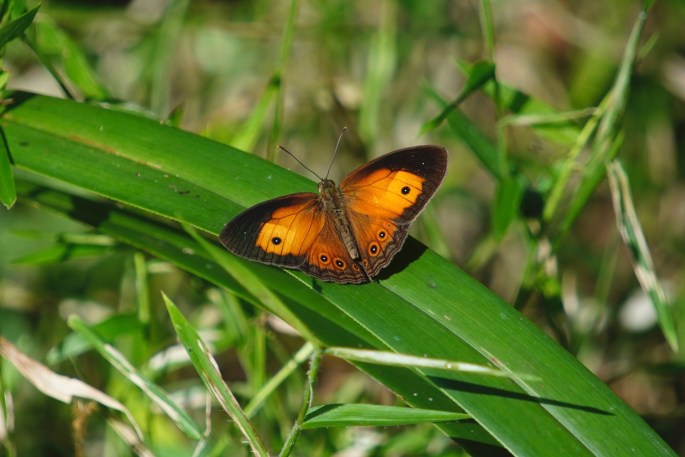
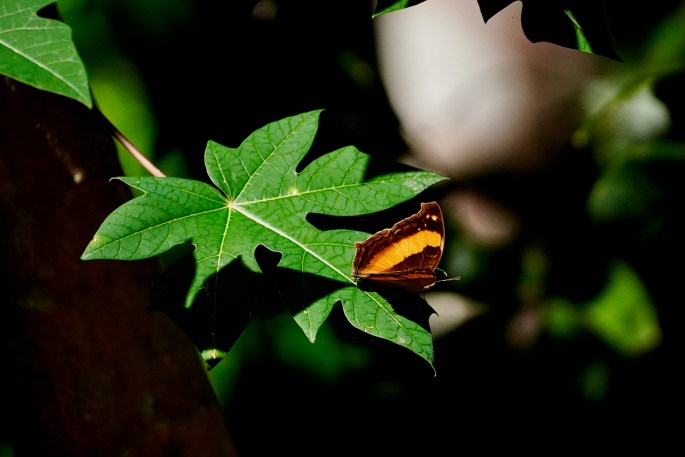
Having ‘bird’ friends visit was a nice way to catch up & to repay past hospitalities. Also a great way to identify some hitherto unidentified birds & their calls. However an unusually long period of heavy daily cloud over a two month period has seen quite a decline in observable bird activity compared to when we first arrived. Both Lindsay & Keith, & Jannette & Peter stayed at different times & whilst worthwhile, perhaps not as productive as they & we might have hoped for.
My 65th birthday rolled around, my sixth consecutive birthday ‘on the road’! To celebrate we went on an outing to Lockhart Poo Ponds (Sewage Lagoons)!
Before you uncurl your now wrinkled nose, you need to understand that not only is this not a smelly place but is actually quite a pretty spot in an overgrown sort of way, & an excellent place for bird watching. Much easier than than in the dense rainforest. We took a picnic packed lunch plus chairs, binoculars & camera & had a very enjoyable sunny few hours, & fairly productive too. On return MrsTea baked me a gluten free chocolate birthday cake.
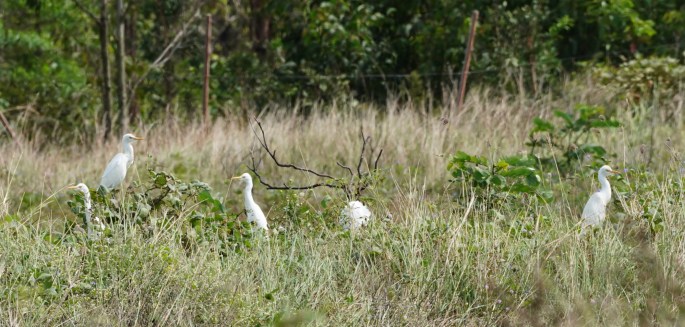


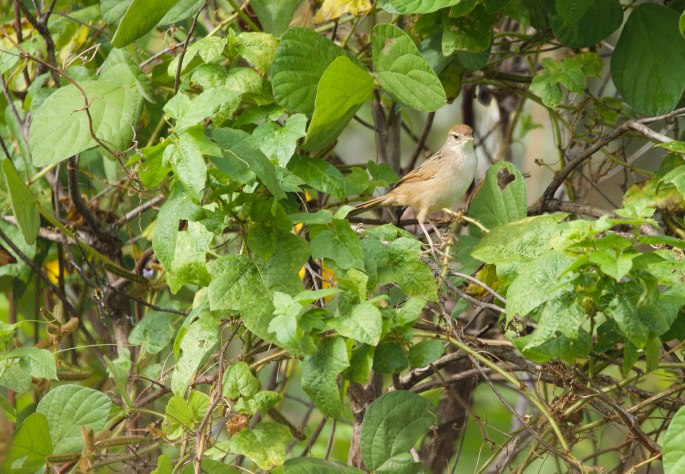
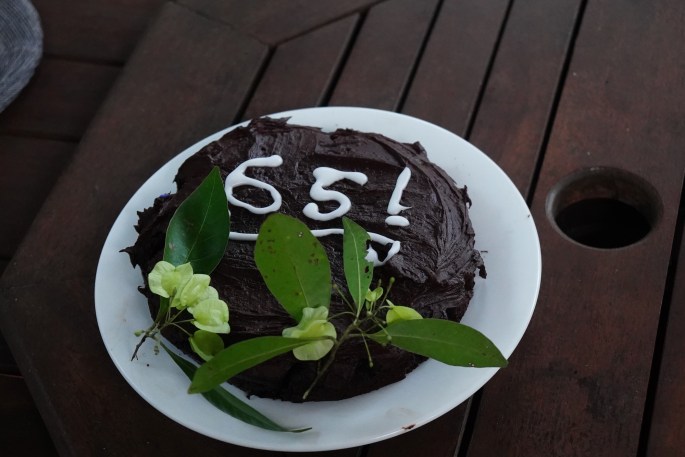
The Lockhart River general store was very poorly stocked when we arrived, but we think this mirrored shortages which were prevalent throughout the country at the time. Since then stocks have progressively improved & we generally get what we need on our weekly shop on Friday mornings. The goods come in on the barge on Wednesdays (mostly), so shopping on Fridays allows time for new stock to be put out on the shelves, & for fresh produce to be as good as it can be.

The shop sells a bit of everything, whitegoods included. When our washing machine seized up (an internal bearing) we were in a fix. Without a machine we couldn’t provide visitors with clean linen on their beds. The machine, bought originally from the store had a warranty which required the failure to be examined by the manufacturer, something logistically impossible in this neck of the woods. Peter, the store manager came to the rescue. He agreed to put a report into the manufacturer, confident that they would accept his assessment. We gained the impression that this process was not new to him. One of the problems however was that he did not have a like for like replacement to give us. The promise of a larger machine he did have in stock fell through when it was sold before we could get it. Instead he gave us the ‘loan’ of a brand new but smaller machine which we have now been using for several weeks until machines of the same size arrive on the barge. Such consignments whilst expected by certain dates, are it seems very unpredictable & expectations need to be flexible. We are fairly confident we will eventually get the replacement, but the whole process has been rather different compared to what one might expect elsewhere. Lots of things work differently in Lockhart! The post office is another example. Run by one person who I managed to get offside when I believed a parcel had been lost. It hadn’t been lost but there was a mix up due to a scanning machine not working correctly. There are supposed to be set hours for the post office, but that is far from reality. Some days it doesn’t open, some days it closes early & for two weeks the person who runs it was out of town with no one to take on the role. Mail still came in on the plane each day, but just continued to pile up. Eventually folk managed to help themselves to their own mail. A lot of trust involved there! We eventually got all we expected.
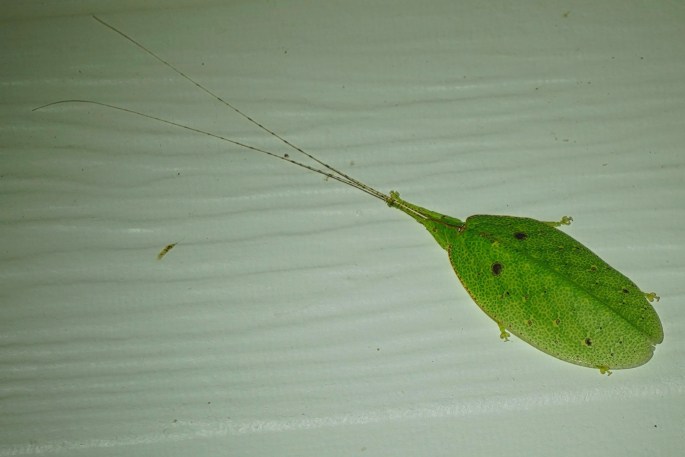
We also buy groceries online via a supermarket chain (Coles) web site.
Making this happen took a *lot* of patience & persistence over several weeks, but now seems to be working ok. We can buy things not available in Lockhart, not least some of the gluten free products I need to eat & it’s also cheaper than buying here. Orders are made up in Cairns & sent up in the mail via plane. There is always the possibility of delays for a myriad of reasons – so non perishables only. Perishable goods – frozen, refrigerated & fresh are bought locally.
Woolworths were a dead loss. Lockhart River & it’s 4892 postcode simply don’t exist on their computer. Coles held out more hope, & by finding & talking to the right person we arranged an a ‘remote area delivery’. Certainly not the standard ‘do it yourself’ online process.
Coles did their bit & delivered it to Australia Post in Cairns. (Coles charge $45 per order delivery regardless of size, but frequently offer discounts which reduces this).
Australia Post then ‘lost’ the $300 order in 3 boxes & we became embroiled in a two week battle to locate them. Australia Post saying “We can’t do anything without a tracking number,” & Coles saying “You’ll have to get the tracking number from Australia Post”. All with phones which would usually drop out part way through calls. Eventually we tracked down the lady who made up our order & took it to the post office, & the person at the post office who remembered her bringing the order in. Having sidestepped the ‘arms length’ corporate defences was a major step forward. Finally we got tracking numbers from Coles, but still no parcel as they had never been scanned in at Cairns Mail Centre. They remained missing. This is the short version folks! So our order was ‘lost’ in Australia Post’s Cairns Mail Centre for almost 3 weeks. Eventually it was delivered to Lockhart. But that’s not all! When the time came we made a second order. This one didn’t get lost, instead Australia Post refused point blank to accept it from Coles. We were told that because they had lost our previous order that a regional post office manager had decided that they would no longer deliver Coles orders to our address, punishing us for their own ineptitude! The solution was to get it sent to the address in Portland Roads where previously I was the postie. This has now worked without problem for two orders. We are hoping this will continue!



We’ve also had some car problems to sort out. First was the rear brakes. Drum brakes. They began to squeal on one side, all the time when driving. Initially I diagnosed sand in the hubs from the deep crossings coming in to Lockhart. We certainly found plenty of sand inside the drum when we looked, but cleaning it all up didn’t resolve the problem. This was not an easy job with my crook back, but we reduced the squealing to ‘only when the brakes were applied’ by backing off the adjustment of the offending wheel. All achieved with Cuppa & MrsTea teamwork, with MrsTea doing the under car parts of the job, & the adjustment being guessed at with the wheel off with the aid of a mirror, torch & an adjusting tool. 3 hands needed, slow but we got there without me being laid up in pain for days aferwards. This was of course just a temporary ‘fix’. Examination had revealed that after 245,000kms, the original brake shoes were in need of replacement, & leaving this until we are back home in Vic next year(and with another 5000kms minimum between now & then) was not an option. Because the exact cause of the squealing (& the squealing brake drum getting pretty hot) was unknown plus on account of advice received I decided to replace all. Brake hydraulic cylinders, brake shoes & drums. Some advice was ‘don’t risk it’, mainly because of the risk of damage to the Master cylinder seal from likely corrosion on it’s 16 year old piston. However other advice suggested how to mitigate this risk. It was a bit nerve wracking, the fear being that of ending up with no brakes somewhere where getting paid for mechanical services was far from assured. All parts & a couple of special tools were collected via online purchases over a 6 week period. One thing we couldn’t get via online purchase were aerosols of brake cleaner, (Dangerous goods, not allowed on the mail plane, & not sold in Lockhart) but luckily friends Peter & Jannette were able to buy these for us in Cairns & brought them up in their vehicle for us. I also spent a month treating my back with more care than usual in the hope of getting through the job without making myself bedridden. As it turned out this was I think very sensible of me as I ’survived the ordeal’. Gary, the head ranger at the National Park agreed to let me use the ranger station workshop. That was a biggie for which we are very grateful. It gave us a level concrete floor out of the sun/rain, plus a trolley jack & proper axle stands instead of blocks of wood & a bottle jack. Much easier! Much less under car work. We had the workshop for a weekend & hoped that with working slowly we’d get the job done in that time, & not end up with an un-driveable car blocking up the workshop.





MrsTea was the expert TA, as well as the provider of packed lunches & drinks. Gary dropped by on day 1 to help out a bit, & we were finished by lunchtime on day two, after a bit of help was sought from Josh, another ranger (& ex mechanic as it turned out) when my brand new out of the box Repco brake bleeder didn’t work properly. With his aid we resorted to conventional brake pedal bleeding with blocks of timber under the pedal to restrict travel & reduce the risk of seal damage. Worked like a charm.
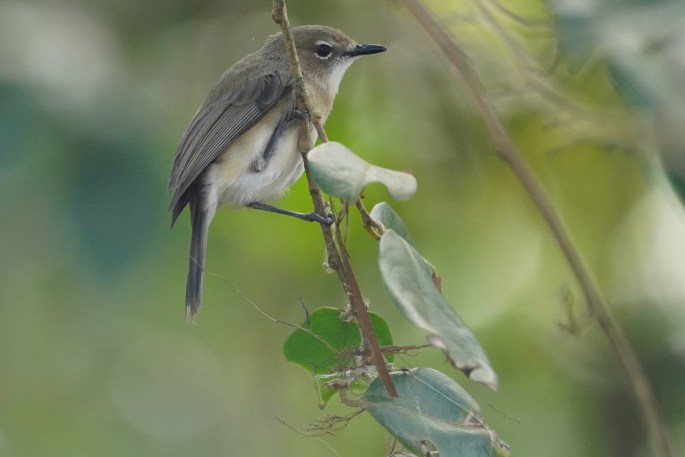
Second car problem more recently was another ‘rainforest one’. The discovery of leaking coolant after driving into town & back. MrsTea pointed out the growing large green puddle underneath the car. Lots of coolant all through one side of the motor & all over the prop shaft & chassis. Finding the location of the leak proved difficult & time consuming. The job became a full day affair. The leak, eventually discovered hidden away underneath the intercooler (after removing it for the second time), made more difficult to see because it was on the underside of a hose, were little teeth marks which had pierced the rubber hose. No doubt the work of a Melomys, a cute little tropical rodent with very sharp teeth. It could have been worse, a lot worse, if it had been a White-tailed rat! The ’s’ shaped hose was not something available here, but I managed to make a replacement from the bits of hose & the joiners that we’ve carried around for the past five year for just this purpose. Knew they’d come in handy one day! Melomys prefer to operate under cover of darkness, so to make under the bonnet a less inviting place to nest, we have been in the habit of leaving the bonnet up when not in use. Now we leave the bonnet up with an electric light at night to illuminate the under bonnet area. Fingers crossed on that.
We celebrated when the internet came back on with an online mini buying spree. 🙂 After five years of washing our now unintentionally ‘lacy’ undies we were both feeling a tad self conscious hanging them, holes & all, out on a line when visitors were here, so we both splurged out on new ones! 🙂 Woohoo! Internet again, quick get some knickers!
Finally A note to others who may be interested in blogging/setting up a their own web site:
I recently renewed my annual subscription with my web hosting company (Stablepoint) at the end of my first year with them. Compared to the webhosts I had been using for years (GoDaddy) they are like a breath of fresh air. Godaddy with it’s ever spiralling upward costs, persistent upselling, & abysmal user support service had been costing me several hundred dollars a year for a basic hosting service. Stablepoint provide a better service on a basic plan with a very responsive ’ticketed’ support service for Aus$70 per year, (including an https certificate which Godaddy wanted to charge more for alone than Stablepoint’s all inclusive price!).
I recommend them. By doing so I am receiving nothing from them return. Just letting you know they are out there & that I’m happy with them. https://kb.stablepoint.com/docs
I expect there are many other good & well priced services worthy of consideration out there, but Godaddy wasn’t one of them. I was quite a relieved to remove myself from their clutches (they didn’t make it easy!), whilst Stablepoint made the transition very easy. The latter especially welcome as we were in a remote location with limited internet access at the time – one reason we had remained with Godaddy for as long as we did.
All the best to you & thanks for reading, either again, or for the first time
Love Cuppa & MrsTea.


